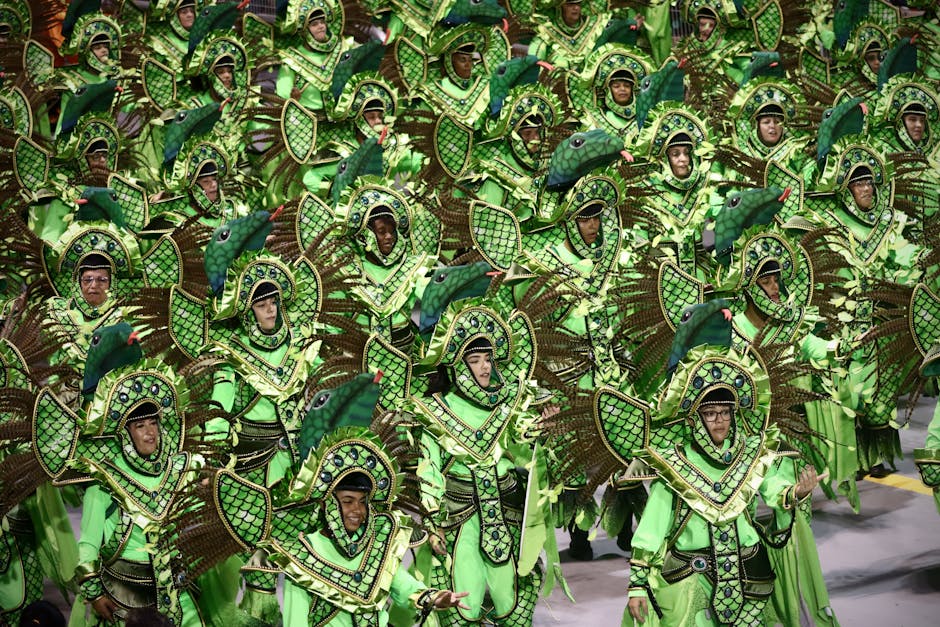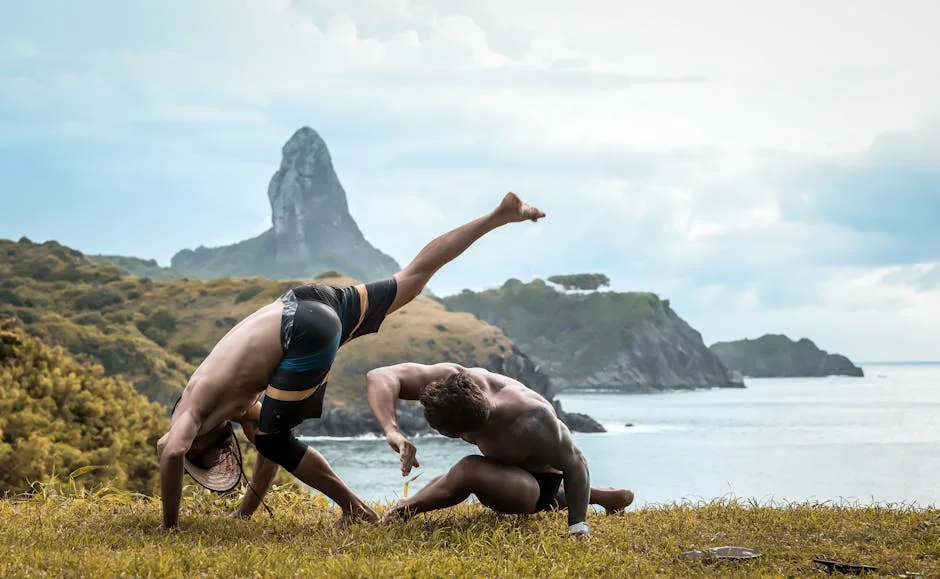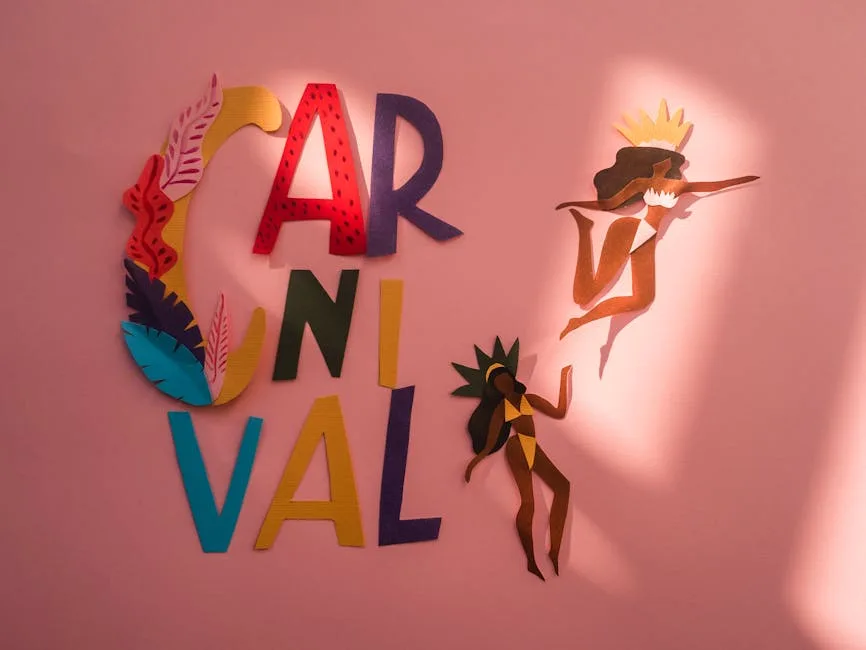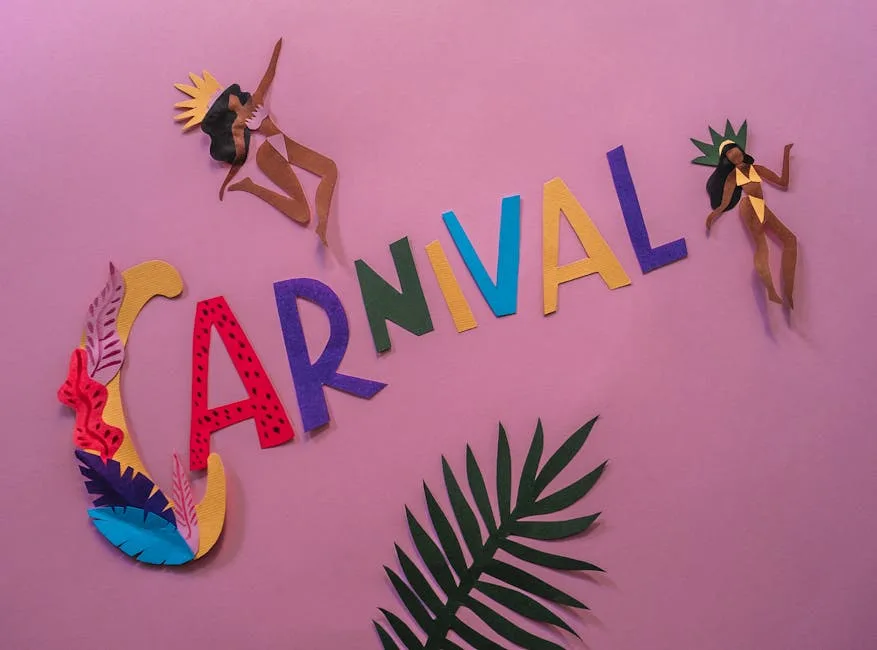- More Than Just a Beat: The Soul of Brazil
- The Unmistakable Heartbeat: All About Samba
- The Cool, Sophisticated Soul: Bossa Nova
- From the Northeast with Love: Forró
- The Dance of Freedom: Capoeira's Rhythmic Game
- Exploring Brazil's Deeper Tracks
- MPB (Música Popular Brasileira)
- Axé
- Funk Carioca
- How to Dive into the Scene Yourself
More Than Just a Beat: The Soul of Brazil
Close your eyes for a moment and think of brazil. What comes to mind? Is it the dazzling spectacle of carnival, the sun-drenched beaches of Ipanema, or the lush Amazon rainforest? While all of these are iconic, the true, pulsating heartbeat of Brazil is something you feel as much as you see or hear. It’s the rhythm. It’s a force of nature that flows through the streets, spills out of neighborhood bars, and unites millions in a collective sway. In Brazil, music and dance aren’t just a pastime; they are the language of life, expressing joy, sorrow, history, and resistance.
From the powerful, driving drums of Samba to the cool, whispered melodies of Bossa Nova, Brazil’s sonic landscape is one of the richest and most diverse on the planet. It’s a story told through a thousand different beats, each with its own regional flavor and deep cultural roots. So, grab your comfiest dancing shoes (or just an open mind) as we take a journey into the heart of Brazil’s vibrant music and dance scene. Prepare to be moved!
The Unmistakable Heartbeat: All About Samba
You can’t talk about Brazilian music without starting with Samba. It’s the country’s most famous cultural export and the undeniable soundtrack to its national identity. But Samba is so much more than the glittering parades you see on TV. Its roots run deep into Afro-Brazilian history, born in the state of Bahia and forged in the communities, or favelas, of Rio de Janeiro in the early 20th century.
At its core, Samba is a celebration of life and community. The classic sound is built around a powerful percussion section, with the deep thud of the surdo drum laying down the heartbeat, the rattling shake of the ganzá, and the intricate rhythms of the pandeiro (a tambourine-like instrument played with incredible skill). Over this, the high-pitched, fast-paced melodies of the cavaquinho, a small four-stringed guitar, weave a story. It’s a sound that’s impossible to resist.
Where to experience it: The ultimate Samba experience is, without a doubt, Rio’s Carnival. The Sambadrome parades are a breathtaking display of artistry, where massive Samba schools compete with elaborate floats and thousands of dancers. For a more intimate vibe, seek out a roda de samba (Samba circle). These are informal gatherings in bars or public squares where musicians sit around a table, playing and singing for the pure love of it. The Lapa neighborhood in Rio is famous for them.

The Cool, Sophisticated Soul: Bossa Nova
If Samba is a fiery, passionate street party, Bossa Nova is a cool, intimate conversation on a moonlit beach. Born in the late 1950s in the sophisticated beachside neighborhoods of Copacabana and Ipanema in Rio, Bossa Nova, or “new trend,” was a revolution in Brazilian music. It stripped Samba of its boisterous percussion and slowed it down, blending its complex rhythms with the harmonic richness of American jazz.
The result was something entirely new: a sound that was smooth, understated, and impossibly chic. Led by a holy trinity of artists—composer Antônio Carlos “Tom” Jobim, poet Vinicius de Moraes, and guitarist/vocalist João Gilberto—Bossa Nova took the world by storm. Gilberto’s soft, almost whispered vocals and unique guitar-playing style became the genre’s signature. And of course, there’s the global anthem, “The Girl from Ipanema” (Garota de Ipanema), a song that perfectly captures the wistful, sun-kissed melancholy of the genre.
Listening to Bossa Nova is like sipping a fine wine; it’s meant to be savored. It’s the perfect soundtrack for a quiet evening, a thoughtful moment, or a lazy afternoon watching the world go by.
From the Northeast with Love: Forró
Travel northeast from Rio, and the rhythm changes completely. Here, the reigning sound is Forró, a genre of music and partner dance that is pure, unadulterated joy. Forró is the music of the sertão (the arid backlands) and is especially popular during the Festas Juninas (June Festivals), massive month-long celebrations of rural life.
The traditional Forró band is a trio, featuring three key instruments: the sanfona (accordion), which carries the melody; the zabumba, a large, flat bass drum worn with a strap; and a metal triangle that provides a high-pitched, driving beat. The lyrics often tell stories of love, hardship, and longing for home.
But Forró is truly about the dance. It’s a close, intimate partner dance where couples move together in a rhythmic shuffle, with spins and turns that range from simple to dizzyingly complex. It’s fun, flirtatious, and incredibly welcoming to beginners. Don’t be surprised if a local invites you to dance—it’s the best way to learn!
The Dance of Freedom: Capoeira’s Rhythmic Game
Is it a fight? Is it a dance? The answer is both, and so much more. Capoeira is a breathtaking Afro-Brazilian art form that combines martial arts, acrobatics, music, and dance into a fluid, rhythmic “game” between two opponents. Its history is a powerful story of resistance, developed by enslaved Africans in Brazil as a way to practice self-defense disguised as a dance.
The game is played inside a roda, a circle of people who sing, clap, and play instruments. The music is not just background noise; it is the soul of Capoeira. It sets the tempo and the style of the game, from slow and strategic to fast and explosive. The most important instrument is the berimbau, a single-stringed percussive instrument that looks like a bow. Its hypnotic twang leads the roda, and its rhythm tells the players how to move. The call-and-response songs, sung in Portuguese, tell stories of history, famous masters, and the spirit of the fight.

Exploring Brazil’s Deeper Tracks
While Samba, Bossa Nova, and Forró are titans of Brazilian music, they only scratch the surface. The country’s musical diversity is immense, with a unique sound for almost every region. Here are a few more to listen for:
MPB (Música Popular Brasileira)
This isn’t one specific genre, but rather a catch-all term for “Brazilian Popular Music” that emerged in the 1960s. MPB artists are known for blending traditional Brazilian rhythms like Samba with international influences like rock and pop. Icons like Caetano Veloso, Gilberto Gil, and Elis Regina used MPB as a vehicle for poetic and often political expression, creating some of Brazil’s most beloved songs.
Axé
Head to Salvador, the capital of Bahia, during Carnival, and you’ll be swept up by the explosive energy of Axé. Born in the 1980s, Axé is a high-octane mix of Afro-Caribbean rhythms, Forró, pop, and rock. It’s the sound of the trios elétricos—massive sound trucks that crawl through the streets with bands playing on top for millions of dancing revelers. It’s pure, infectious party music.
Funk Carioca
Often just called Funk, this is the raw, bass-heavy sound of Rio de Janeiro’s favelas. Evolving from Miami Bass in the 1980s, Funk Carioca has become a dominant force in Brazilian pop culture. Its hard-hitting beats and often explicit lyrics have made it controversial, but it’s an undeniable cultural phenomenon that gives voice to a generation of young Brazilians.
How to Dive into the Scene Yourself
Reading about music is one thing, but feeling it is another. If you’re traveling to Brazil, immersing yourself in the local music scene is a must. Here’s how:
- Find a Roda de Samba: In Rio, head to the Lapa neighborhood on a weekend night, or visit the Pedra do Sal on a Monday for an authentic, historic samba circle.
- Catch a Live Show: Major cities like São Paulo and Rio have incredible live music venues. Look for a casa de show featuring Forró, MPB, or whatever style you’re curious about.
- Experience Carnival: If you can, plan your trip around Carnival (usually in February or March). While Rio is the most famous, the Carnivals in Salvador (for Axé) and Olinda/Recife (for Frevo) are equally spectacular and offer a different flavor.
- Watch a Capoeira Roda: You can often find public rodas in squares and on beaches, especially in Salvador, the heartland of Capoeira.
From the streets of Rio to the beaches of Bahia, music in Brazil is a living, breathing entity. It’s a thread that connects the past to the present, a celebration of resilience, and an open invitation to move your body and feel the rhythm of life. So go ahead, listen, dance, and let the heartbeat of Brazil move you.




